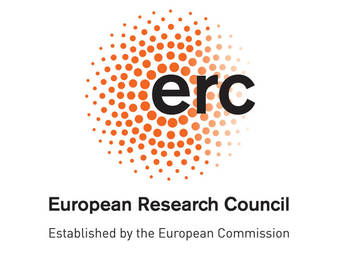Renommierte ERC Grants für Forschungsvorhaben aus der Physik
Drei Forscher erhalten EU-Förderung
2017-09-05 – Nachrichten aus dem Physik-Department

Jedes Jahr vergibt der europäische Forschungsrat Grants in verschiedenen Kategorien. Starting Grants richten sich an vielversprechende wissenschaftliche Nachwuchskräfte und sind mit bis zu 1,5 Millionen Euro dotiert. Proof-of-Concept Grants werden an Wissenschaftlerinnen und Wissenschaftler vergeben, die prüfen wollen, ob aus ihren ERC-Forschungsprojekten marktfähige Innovationen entstehen können, ein Aspekt, der an der TUM als unternehmerischer Universität gleichermaßen Aufmerksamkeit findet. Durch die aktuellen Projekte steigt die Zahl der ERC-Grants am Physik-Department auf 20, die Zahl an der TUM beträgt nun 79.
Dr. Ante Bilandzic
Der Aggregatzustand, den der Physiker Dr. Ante Bilandzic untersucht, existierte unter natürlichen Bedingungen nach dem Urknall nur sehr kurz: für den Bruchteil einer Millisekunde. Quark-Gluon-Plasma ist ein Zustand, in dem Materie so viel Energie besitzt, dass sich selbst die ansonsten sehr stark gebundenen Elementarteilchen Quarks und Gluonen relativ frei bewegen können. Ein Quark-Gluon-Plasma kann mittlerweile beispielsweise im Large Hadron Collider (LHC), dem größten Teilchenbeschleuniger der Welt am Genfer CERN, künstlich erzeugt werden. Genau dort will Ante Bilandzic die Daten für sein ERC-gefördertes Projekt sammeln. Nach Umbauten des LHC im Winter 2014/15 können Quark-Gluon-Plasmen mit noch höheren Energien erzeugt werden. Bilandzic ist Experte für die Auswertung der riesigen Datenmengen, die bei diesen Experimenten anfallen und hofft, mithilfe neuer selbst entwickelter Methoden die genauen Eigenschaften des Quark-Gluon-Plasma, insbesondere sein Fließverhalten zu erforschen.
Dr. Ante Bilandzic ist seit 2015 Wissenschaftlicher Mitarbeiter in der Forschungsgruppe für Dichte und seltsame hadronische Materie von Prof. Laura Fabbietti. Am CERN gewonnene Daten analysiert er bereits seit gut zehn Jahren.
Erfahren Sie mehr über Ante Bilandzic und sein ERC-Projekt (englisch).
Dr. Johannes Stigler
Chromosomen verändern im Laufe des Teilungszyklus einer Zelle ihre Struktur. Die vertraute X-Form haben sie vor allem kurz vor und während der Zellteilung. In der sogenannten Interphase, zwischen den Kernteilungen, haben sie dagegen andere Formen. Das hat weitreichende Auswirkungen: Die Struktur eines Chromosoms bestimmt mit, welche Teile des Erbguts aktiv werden oder interagieren. Bislang ist bekannt, dass bestimmte Proteine dafür sorgen, dass sich Chromosomen auf eine bestimmte Art verformen. Was bei diesen Prozessen genau passiert, wissen wir noch nicht. An dieser Stelle setzt das ERC-Projekt von Dr. Johannes Stigler an. Mithilfe neuer mikroskopischer Techniken will er untersuchen, wie Chromosomen „in Form kommen“. Das verwendete Verfahren ist so genau, dass Stigler das Verhalten einzelner Moleküle beobachten kann.
Dr. Johannes Stigler ist wissenschaftlicher Mitarbeiter am Lehrstuhl für Molekulare Biophysik.
Prof. Dr. Johannes Barth
Ein Proof-of-Concept Grant wurde an Prof. Johannes Barth verliehen. Die Grundlagen für das aktuelle Projekt „SoftBeam“ legte der Physiker mithilfe eines Advanced Grants des ERC, der ihm 2009 zugesprochen wurde.
Für „SoftBeam“ entwickelte das Team um Prof. Barth und Dr. Hartmut Schlichting eine Methode, um hochempfindliche Moleküle im Vakuum zu kontrollieren. Solche Verfahren bieten neue Möglichkeiten bei der Herstellung von Nanomaterialien, oder bei der Analyse von Stoffen im Rahmen von Massenspektrometrie. Bei beiden Anwendungen sind wichtige Moleküle und biologische Bausteine nur im gelösten Zustand verfügbar, müssen jedoch unter Vakuumbedingungen gehandhabt werden. Bislang gibt es kein universell anwendbares Gerät für diese Aufgabe. Herkömmliche Methoden können insbesondere Moleküle, die empfindlich auf Temperaturschwankungen oder Wasserentzug reagieren, in ihrer Integrität und somit Funktionalität beeinträchtigen. Die Wissenschaftler setzen für ihre Methode auf einen kontrollierten, hochintensiven und hochreinen Ionenstrahl, der aus jeder beliebigen löslichen Substanz erzeugt werden kann und sehr genau geführt wird. Mit dieser Entwicklung soll eine Marktlücke in der Nanotechnologie und der analytischen Chemie erschlossen werden.
Johannes Barth ist seit 2006 Professor für Molekulare Nanowissenschaften und Chemische Physik von Grenzflächen an der TUM und derzeit Dekan seiner Fakultät.
Links
- ERC-Grants der TUM
- Arbeitsgruppe Fabbietti
- Arbeitsgruppe Rief
- Arbeitsgruppe Barth
- SFB 1258 “Neutrinos and Dark Matter in Astro- and Particle Physics”
- European Research Council
- ERC Starting Grants
- Redaktion
- Paul Hellmich, Dr. Johannes Wiedersich
Verwandte Meldungen
- Ante Bilandzic receives ERC research grant (english) – 2017-09-05
- New ALICE results show novel phenomena in proton collisions – 2017-05-08
- Zwei weitere ERC-Grants ans Physik-Department – 2016-12-23
- Neuer Sonderforschungsbereich am Physik-Department – 2016-11-21
Kontakt
- Dr. Ante BilandzicDense and Strange Hadronic MatterTechnische Universität MünchenJames-Franck-Str. 185748 GarchingTel.: +49 89 289-12563E-Mail: ante.bilandzic@tum.de
- Dr. Johannes StiglerTechnische Universität MünchenJames-Franck-Str.1, 85748 GarchingE-mail: stigler@ph.tum.de
- Prof. Dr. Johannes V. BarthTechnische Universität MünchenJames-Franck-Str. 1, 85748 Garching, GermanyTel.: +49 89 289-12608E-Mail: e20office@ph.tum.de